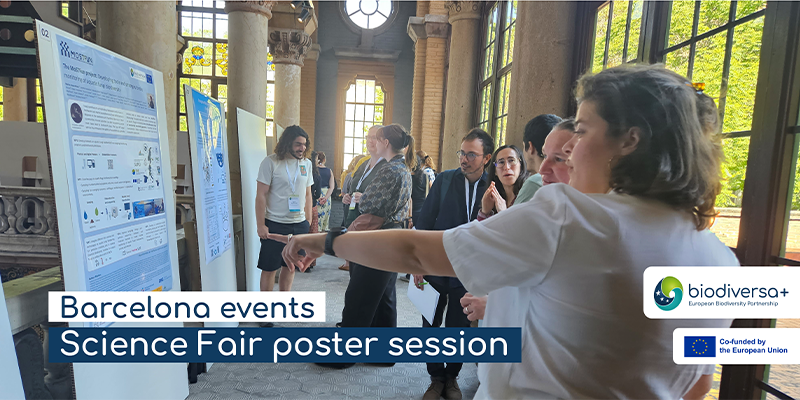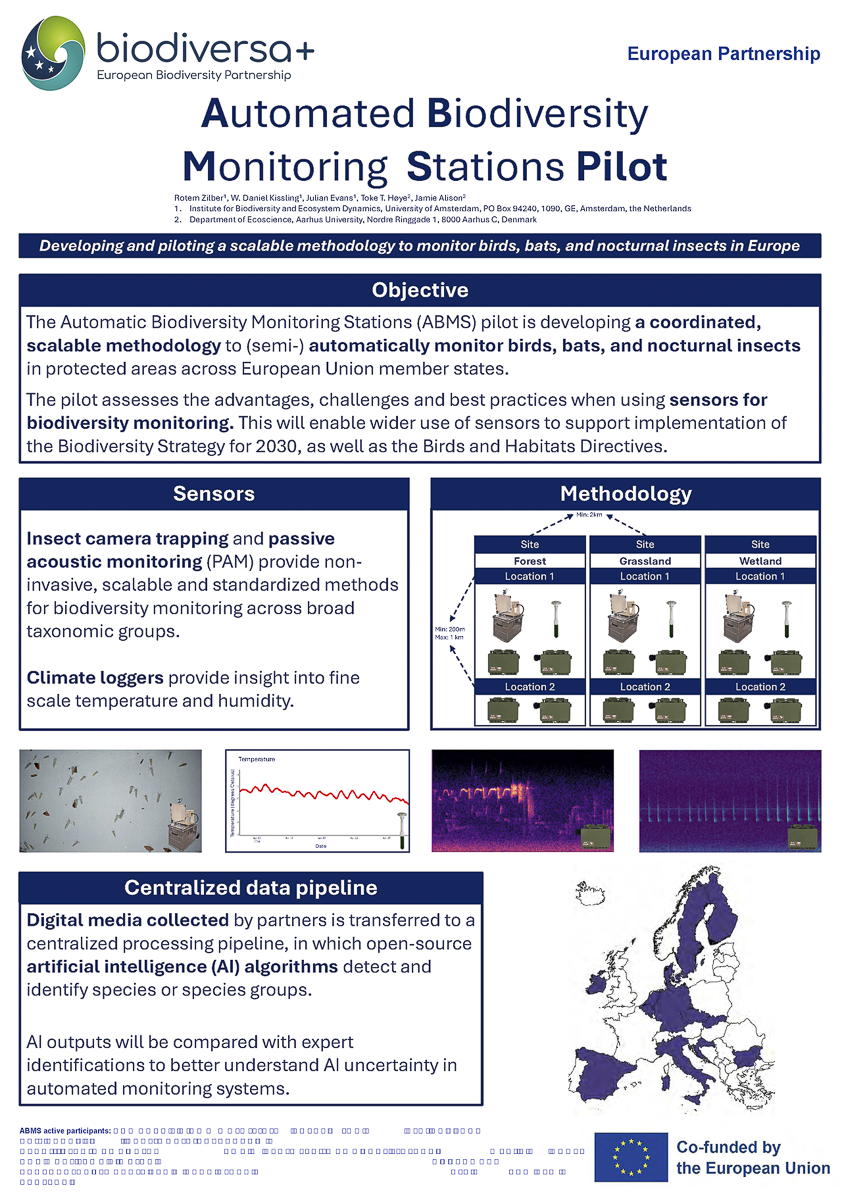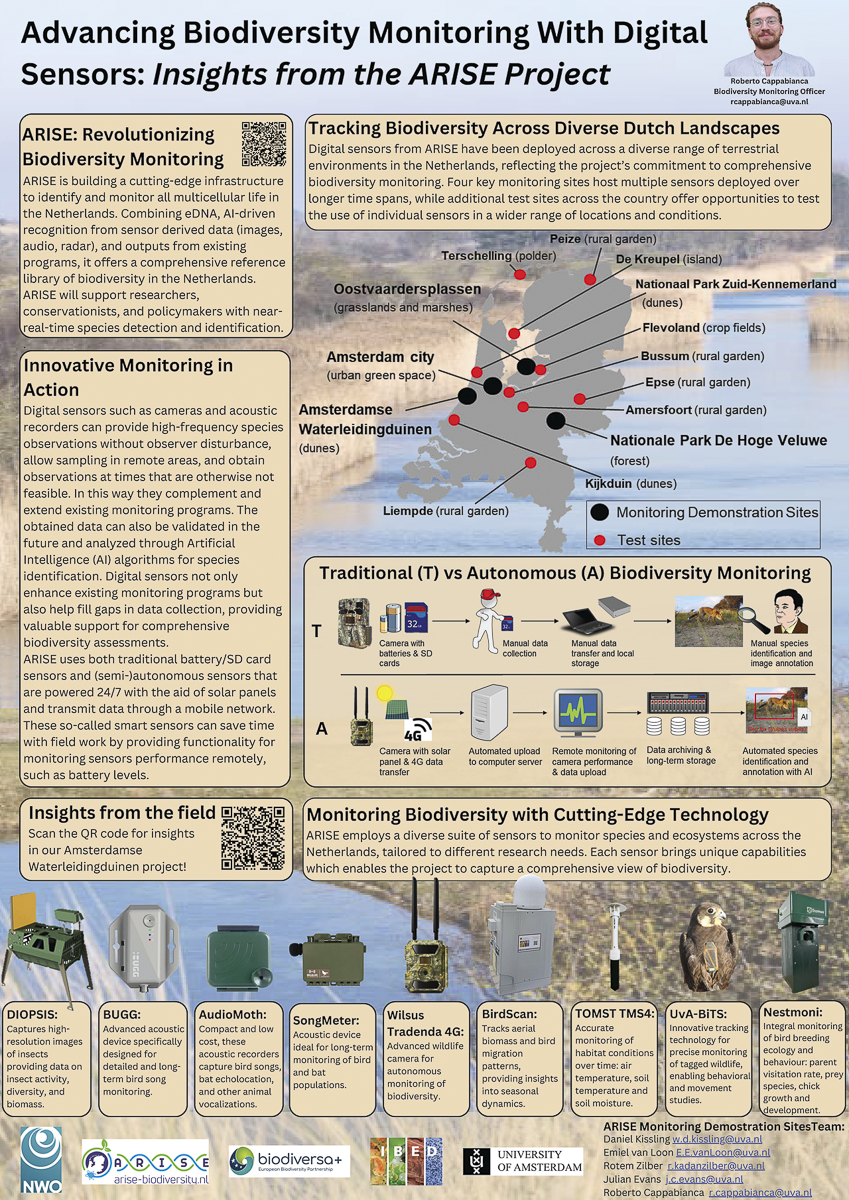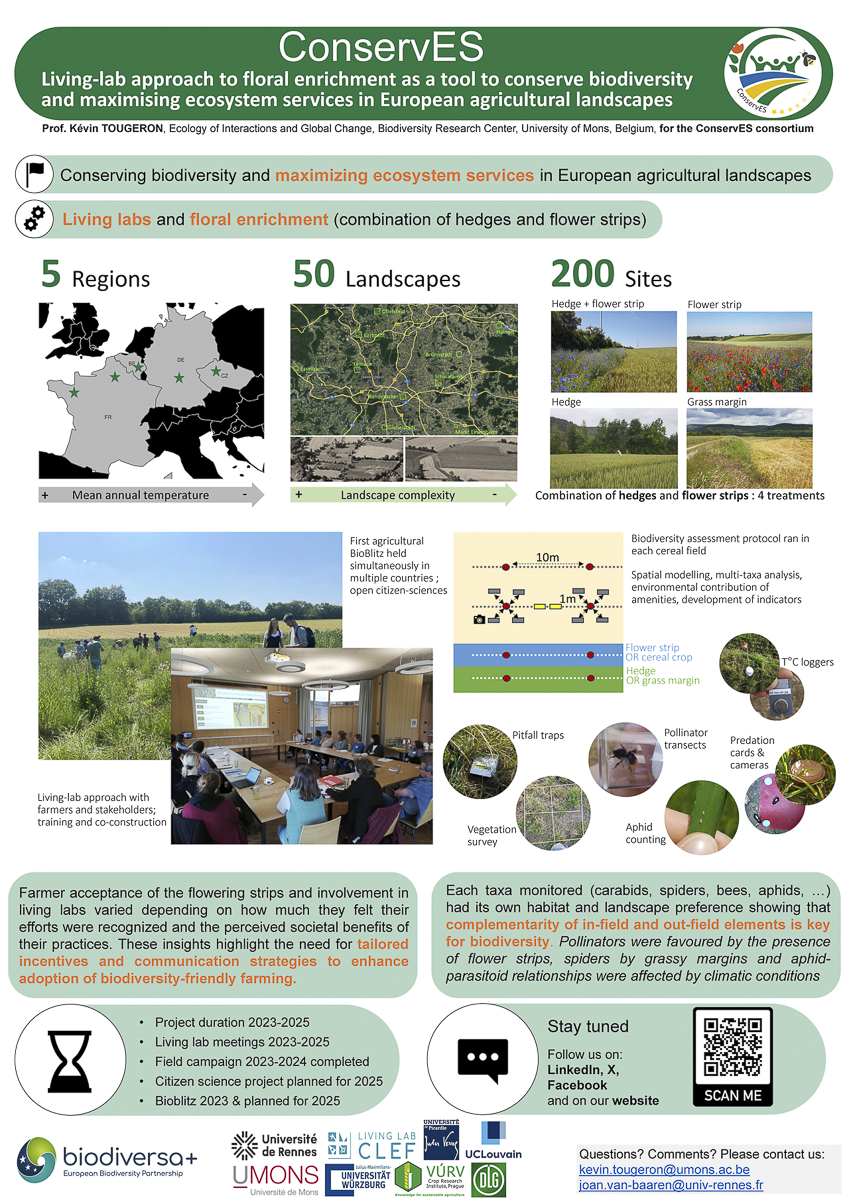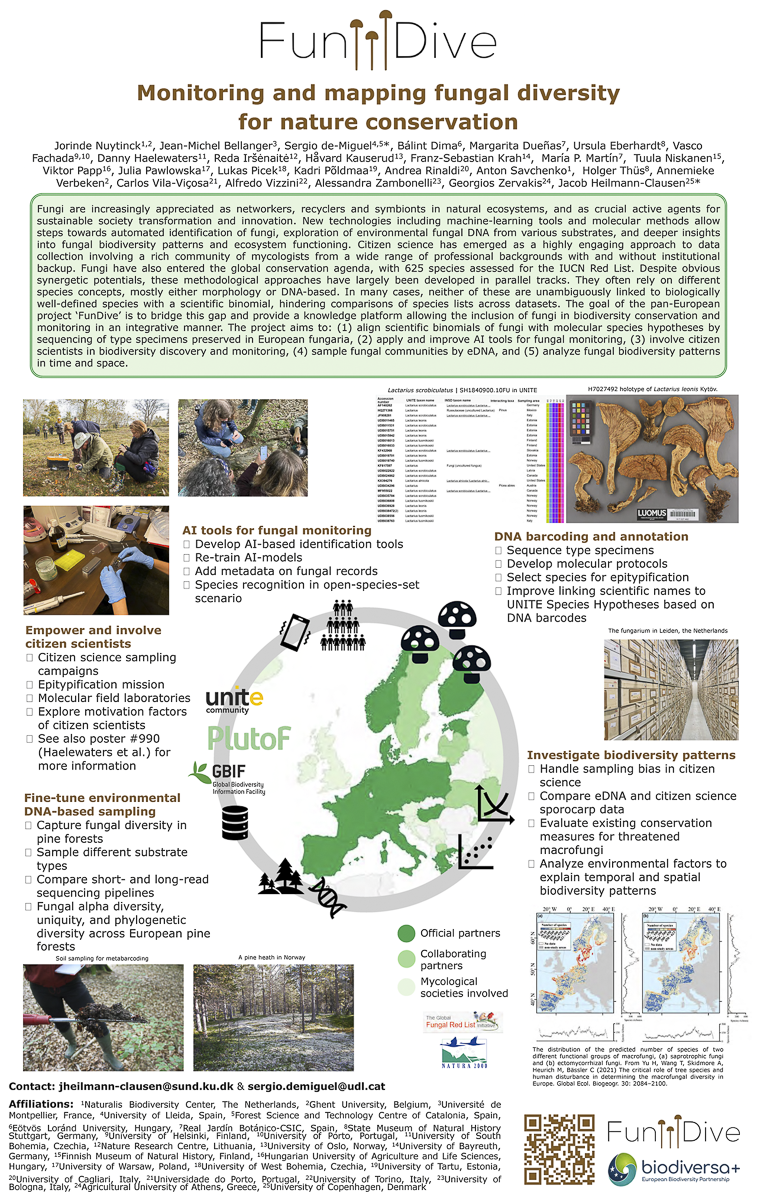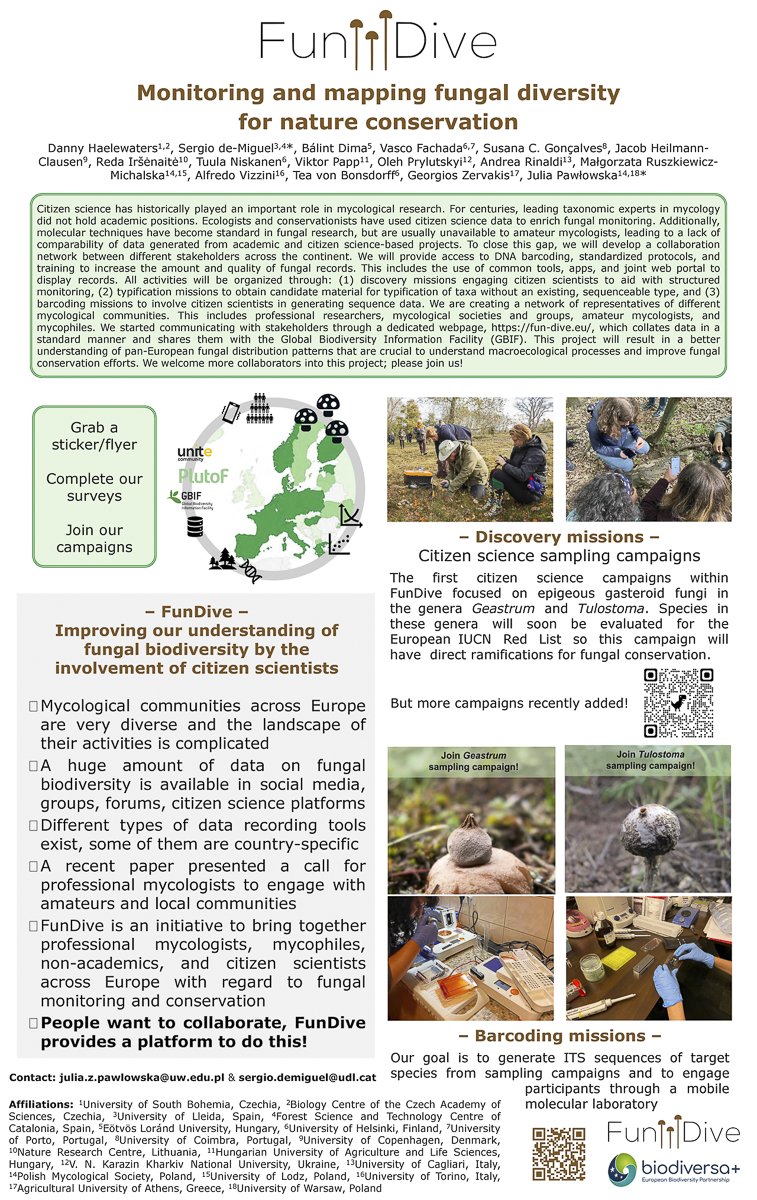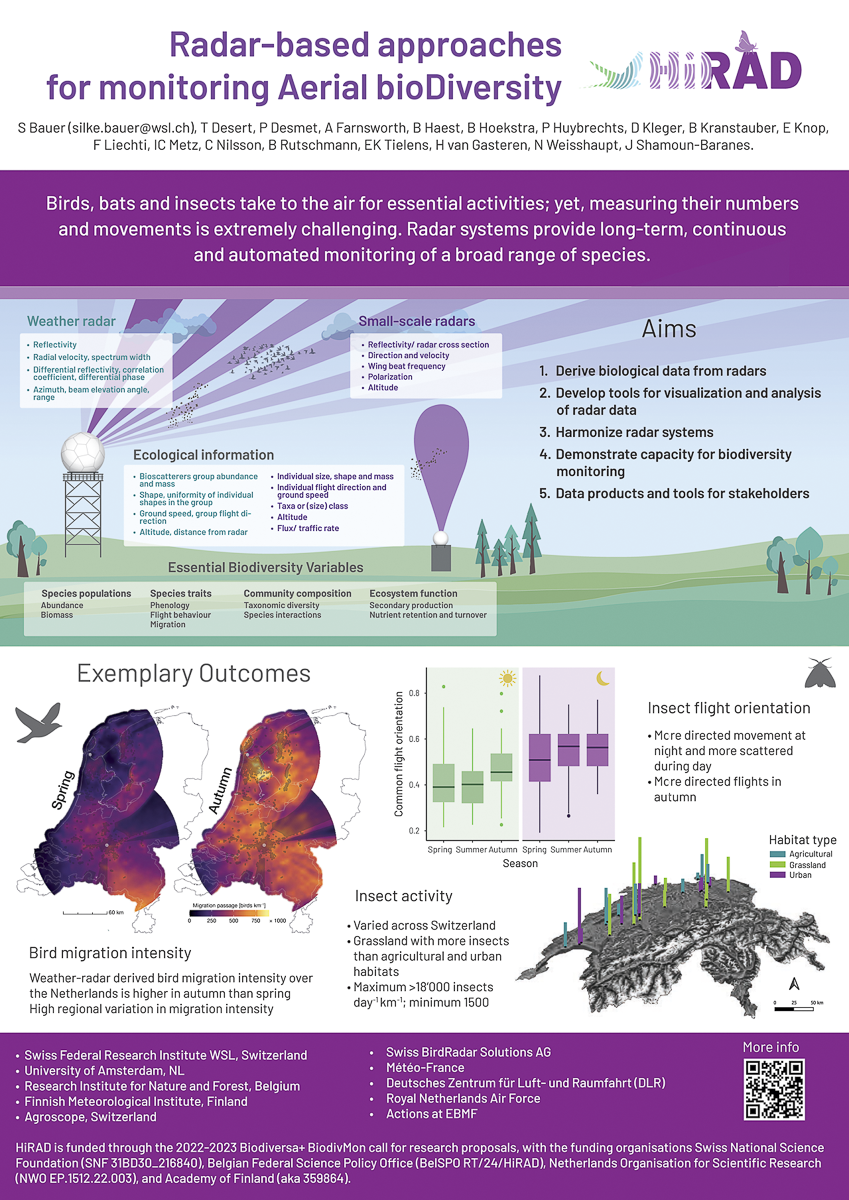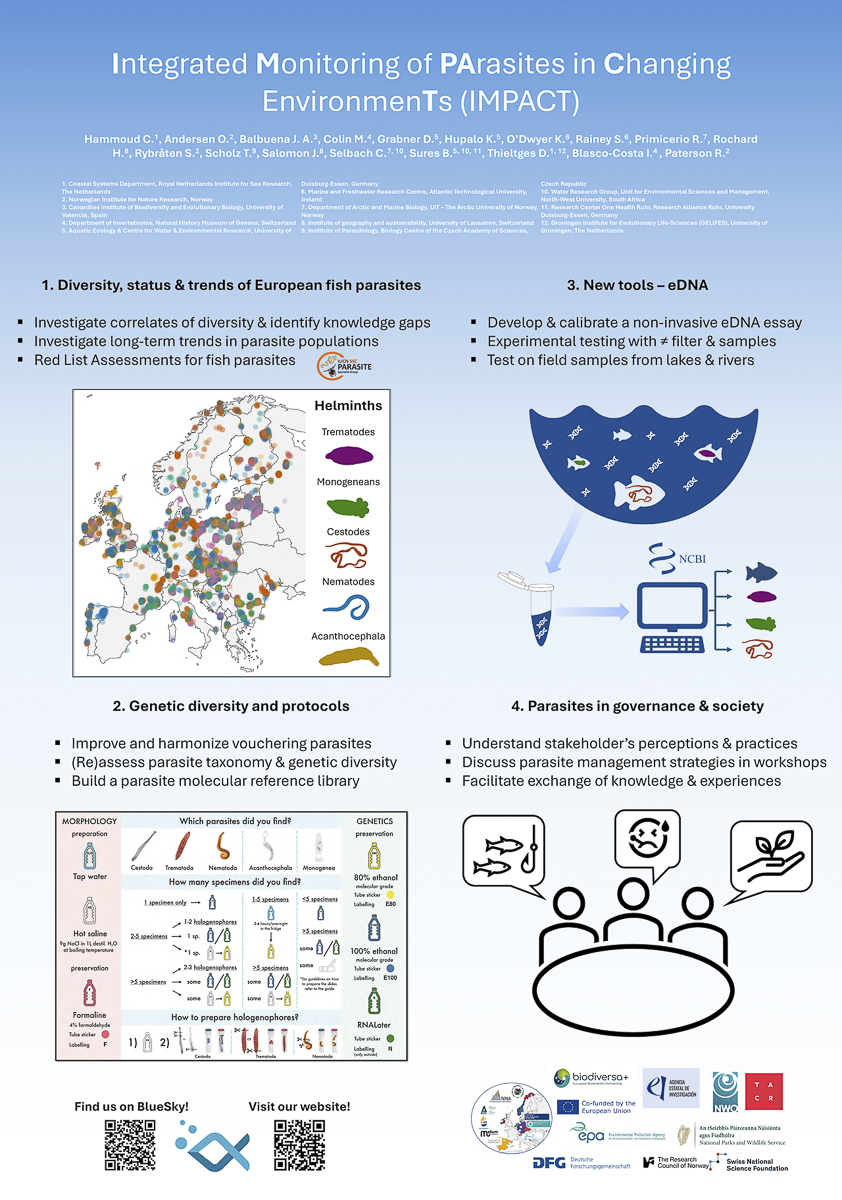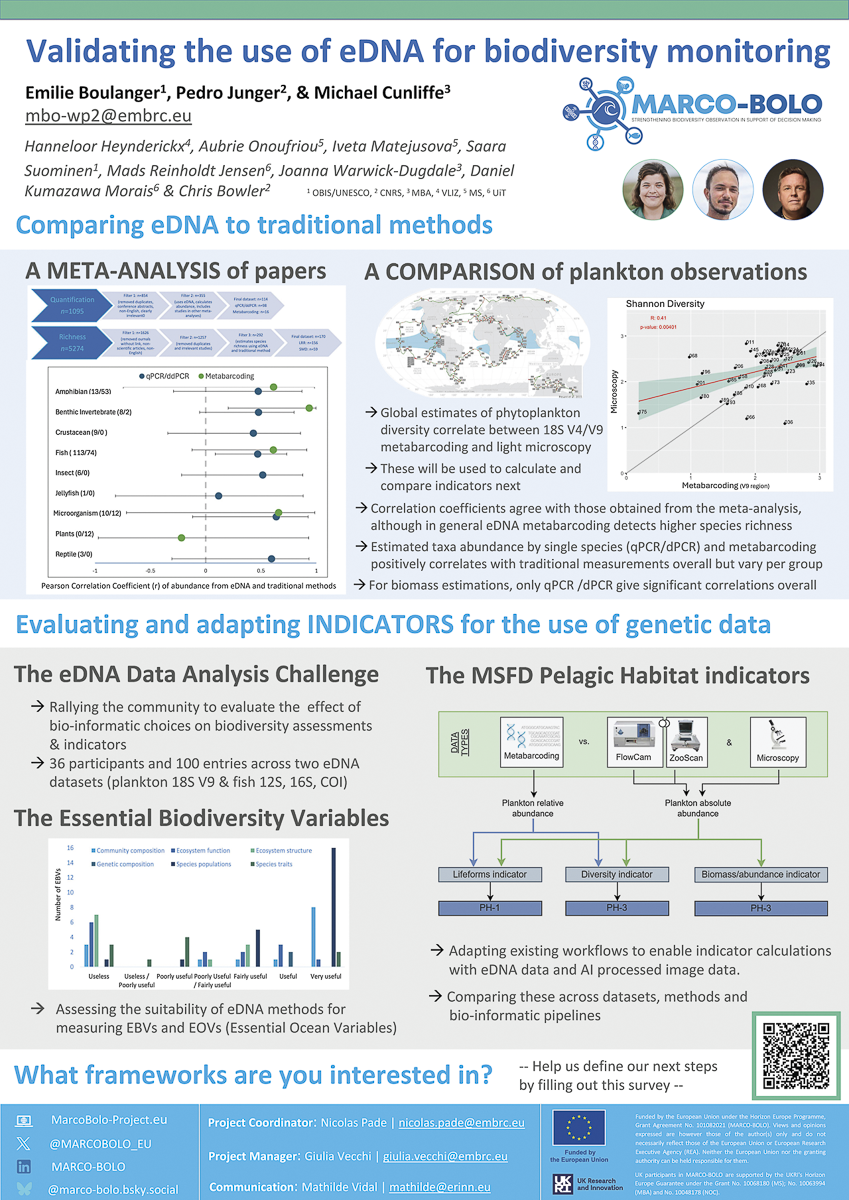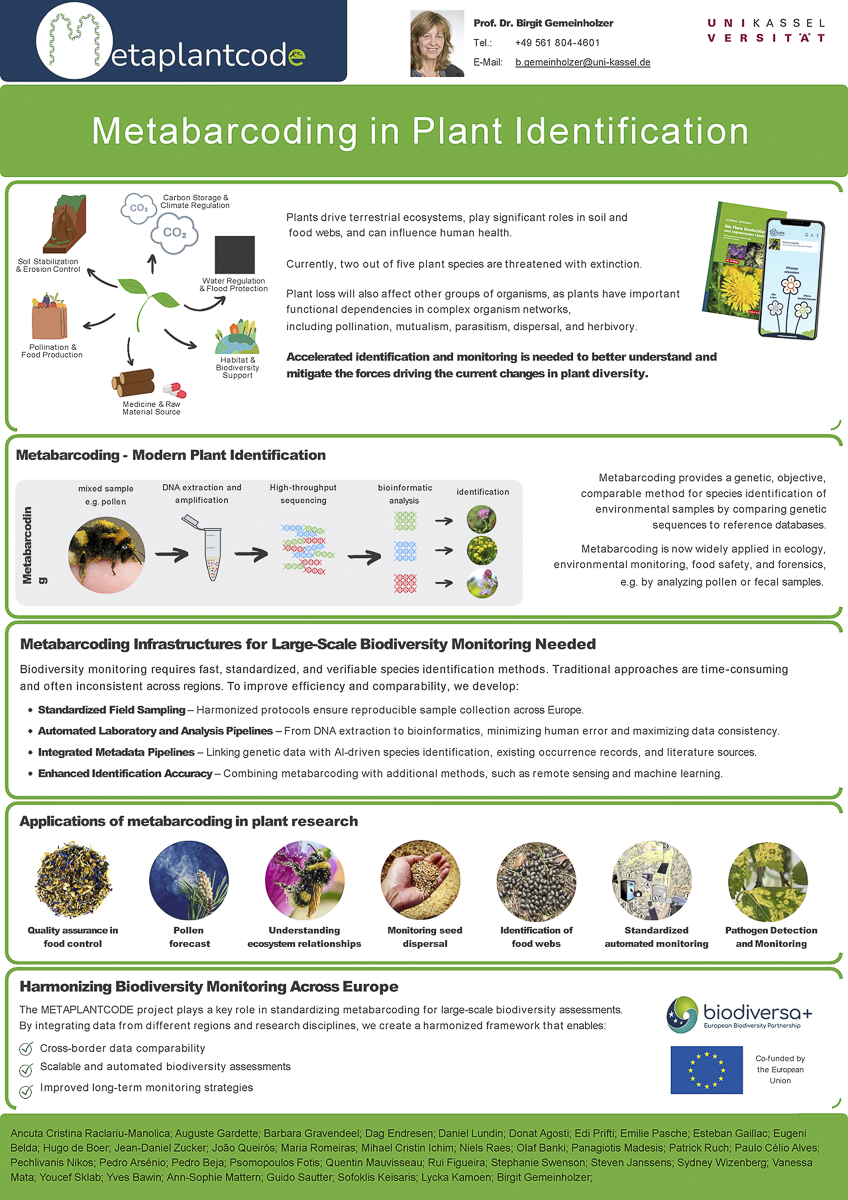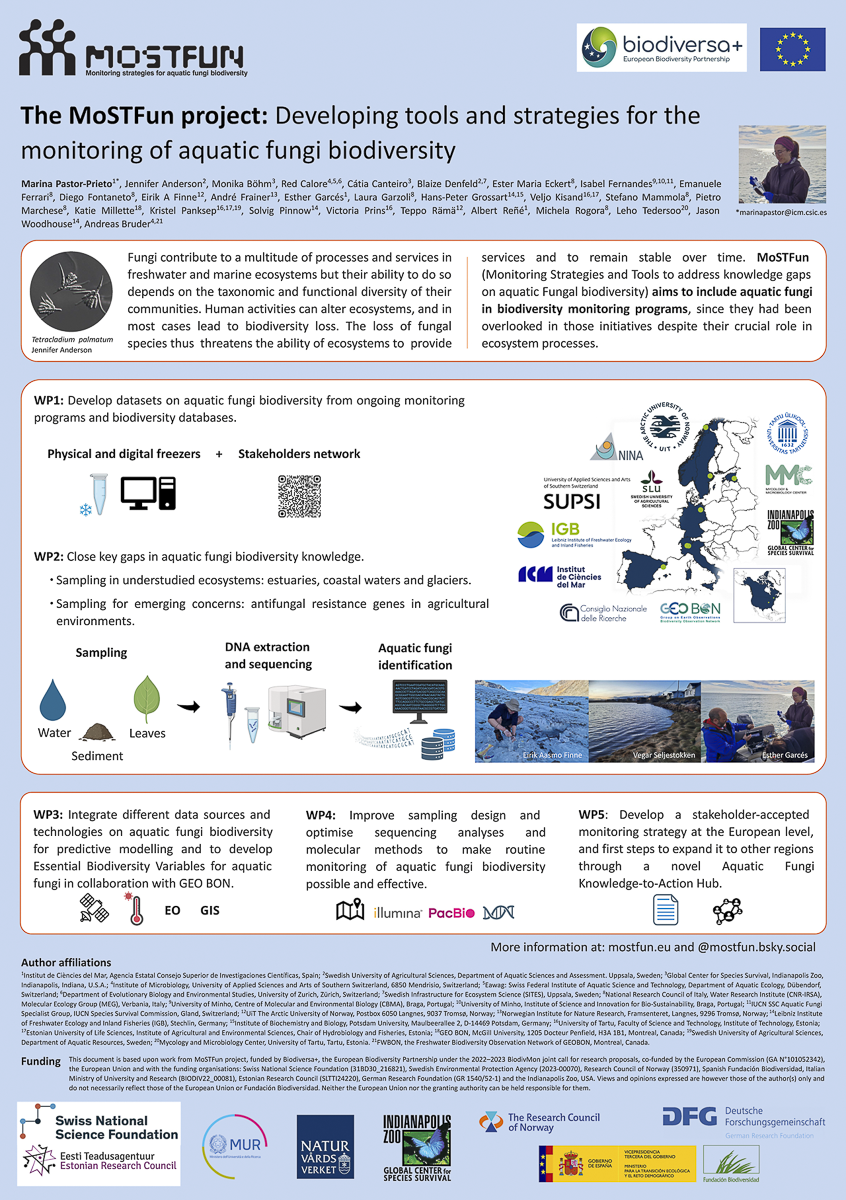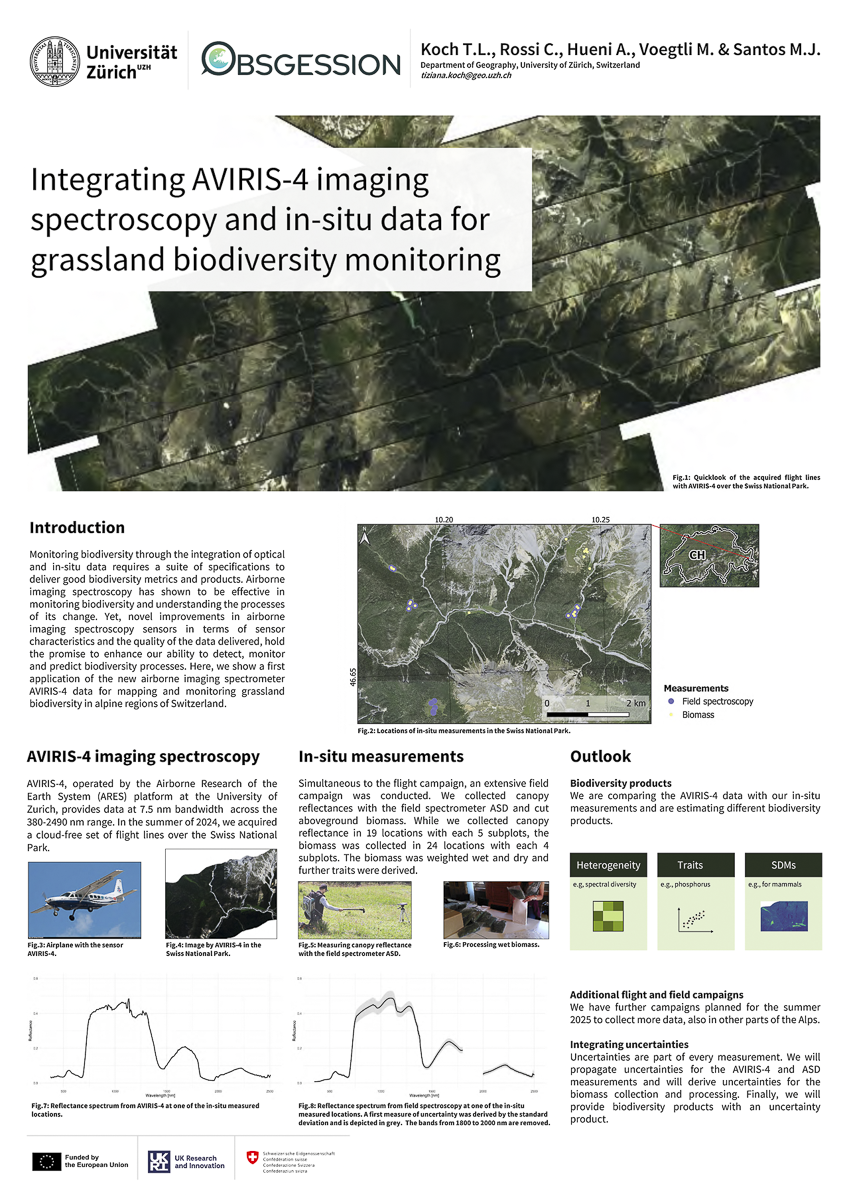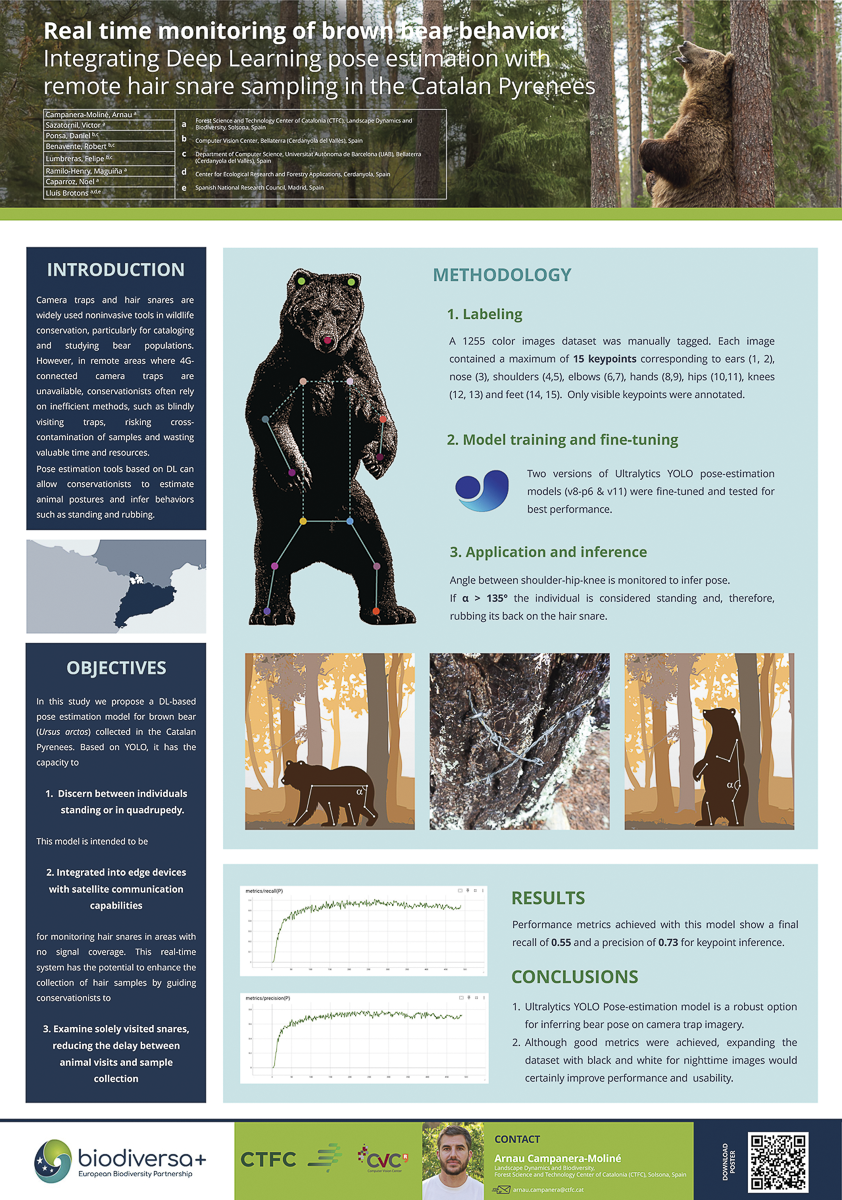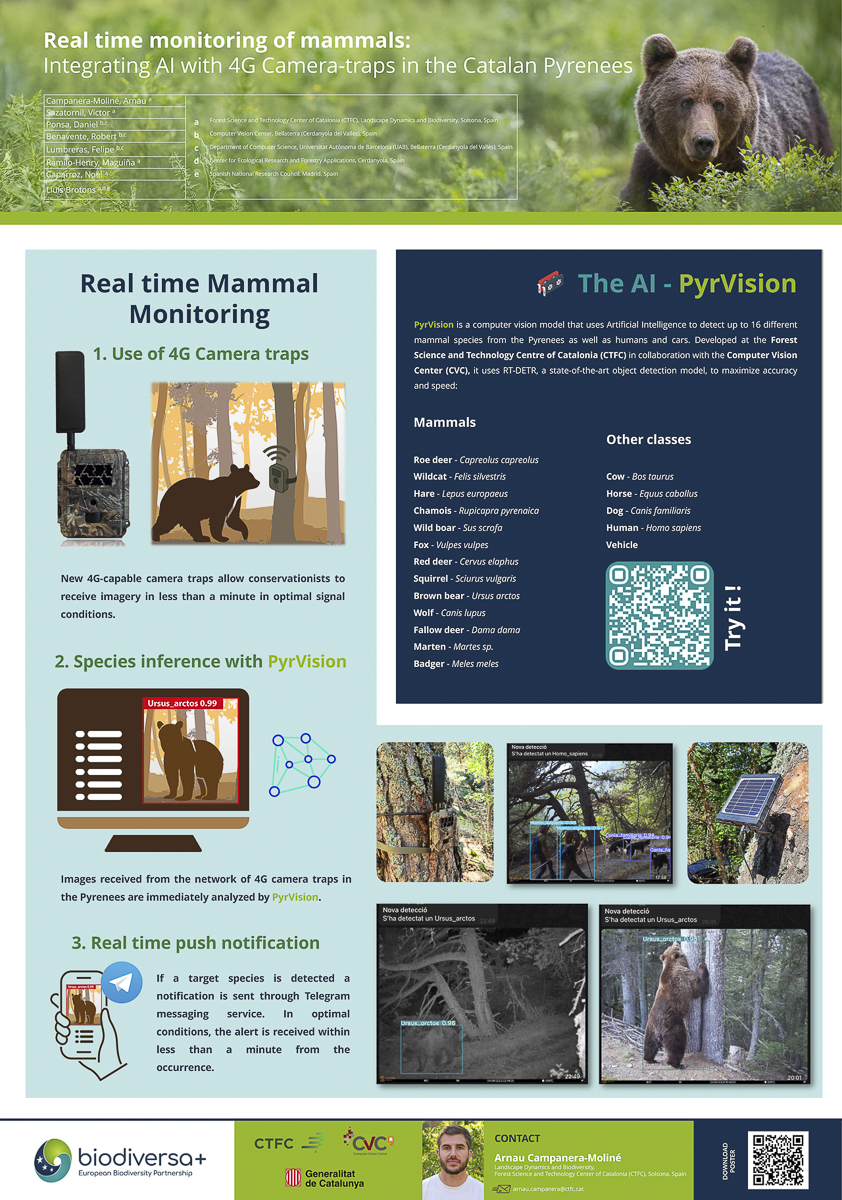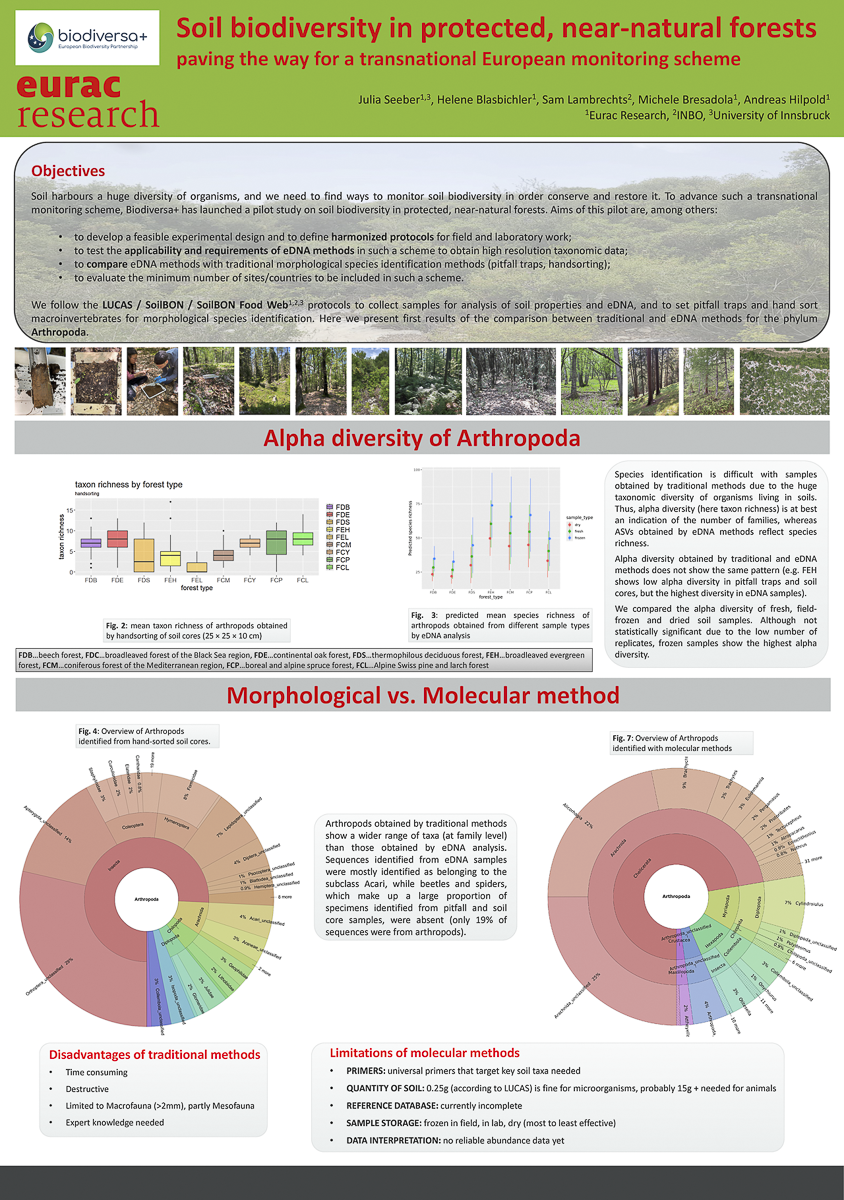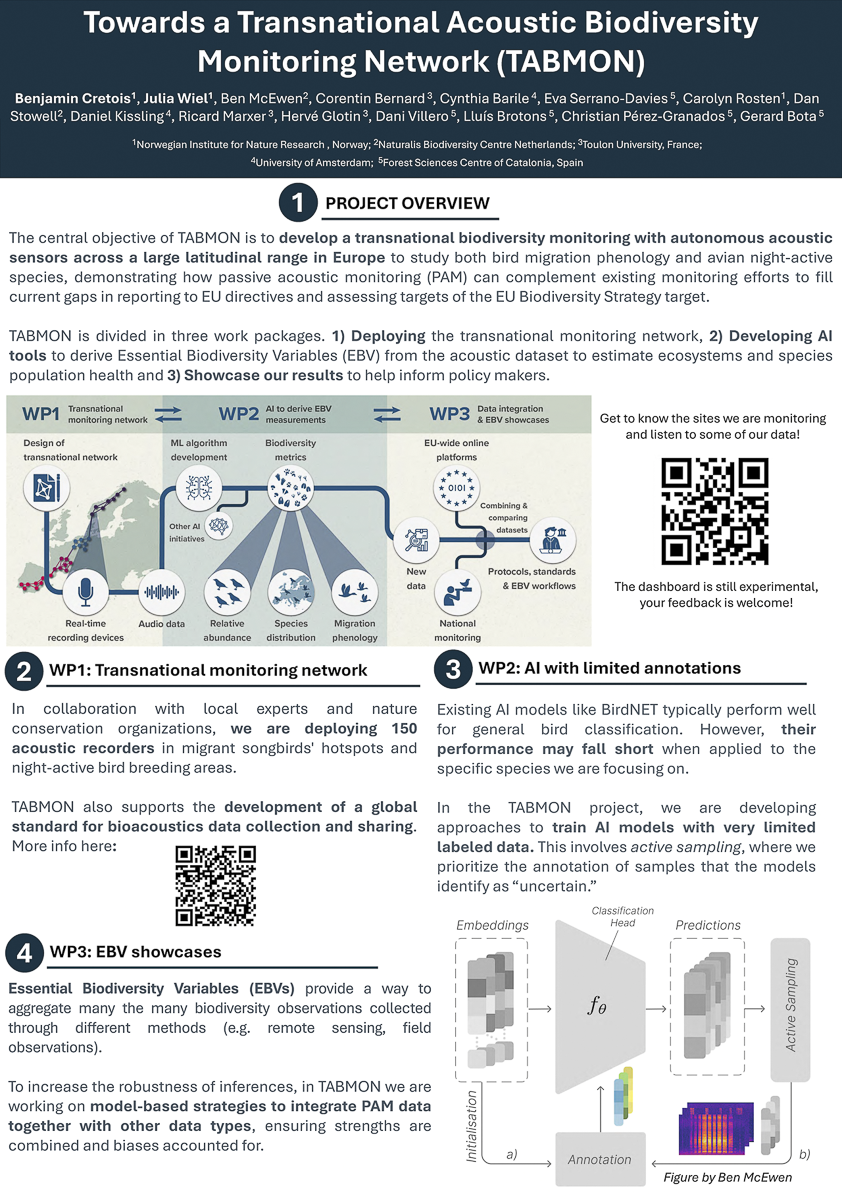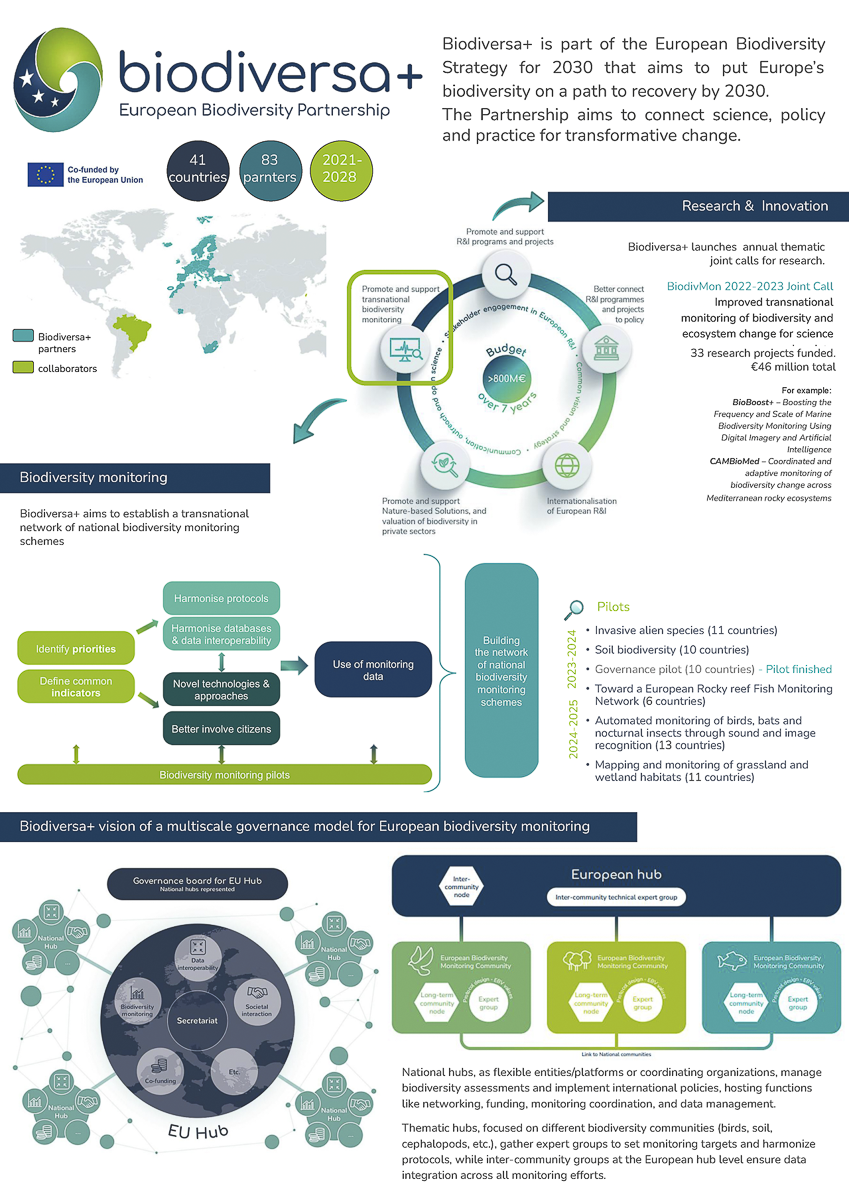What does the future of biodiversity monitoring look like? Judging by the recent poster session held during our Science Fair in Barcelona, it’s one that is more interconnected, automated, and inclusive than ever before. The session brought together researchers from across Europe and beyond, offering a vivid snapshot of where biodiversity monitoring is heading and the innovations making it possible.
From molecules to landscapes
One clear trend was the growing reliance on molecular tools like eDNA and metabarcoding. Projects like MARCO-BOLO, IMPACT, and METAPLANTCODE are pushing the boundaries of what can be detected in aquatic and terrestrial systems, comparing genetic methods to traditional surveys and refining protocols for consistency and policy relevance. At the same time, initiatives such as the Soil Pilot and MoSTFun are tackling underexplored areas—soil organisms and aquatic fungi, respectively—highlighting how molecular tools can bring neglected components of biodiversity into view.
But DNA is not the only data source gaining traction. Remote sensing and radar technologies are increasingly central. Posters from HiRAD, OBSGESSION, and the Biodiversa+ Habitat Pilot demonstrated how aerial imaging, from satellites to drones to radar, can monitor habitat quality and airborne biodiversity at unprecedented scales and frequencies. This spatial turn in biodiversity monitoring supports better coverage, especially in hard-to-access environments like airspace or expansive grasslands.
Automation and AI
Across several posters, artificial intelligence emerged as a powerful ally. From the ARISE infrastructure in the Netherlands to PyrVision monitoring mammals in the Pyrenees using deep learning, AI is being used to analyse camera-trap images, acoustic recordings, radar data, and hyperspectral imagery, often in near real-time. Projects like Biodiversa+ ABMS Pilot and TABMON are integrating AI with sensor networks to monitor birds, bats, and insects, reducing the manual burden while scaling up data collection.
This automation enables both speed and volume, but also raises new challenges around validation, uncertainty, and data governance, challenges that these projects are actively addressing through centralised pipelines and comparisons with expert-based identifications.
Inclusivity and governance
While many posters focused on technological innovation, others reminded us that how monitoring is conducted, and by whom, matters. BIO-JUST presented a compelling case from Colombia, showing how conservation efforts can inadvertently marginalise local communities, and how participatory mapping tools can support environmental justice. In Europe, projects like ConservES and FunDive embrace citizen science, engaging farmers, amateur mycologists, and local stakeholders in both data collection and stewardship.
This trend toward inclusive monitoring was further reflected in the use of Living Labs, participatory design, and co-development with stakeholders, as seen in IMPACT and MoSTFun. These approaches underscore the importance of legitimacy, trust, and usability when integrating monitoring outcomes into policy and practice.
Innovative governance models are also part of the conversation. The ForestWeb3 project proposed using blockchain and decentralised networks to facilitate data sharing and incentivise sustainable practices, offering a novel response to long-standing challenges in data ownership and transparency.
As biodiversity crises transcend borders, monitoring must too. Several posters, including one on the Biodiversa+ monitoring governance model, highlighted these efforts, spanning everything from standardising protocols and establishing Essential Biodiversity Variables (EBVs), to developing interoperable tools and shared infrastructures. All supporting a cohesive, multiscale system to inform national and EU strategies.
A shared vision
The poster session offered a glimpse of what’s possible when science, technology, and society converge: a shared ambition to move beyond fragmented, labour-intensive monitoring toward integrated, tech-enabled systems that are faster, broader in scope, and more inclusive. Together, these initiatives are laying the foundation for a monitoring framework that reflects both the complexity of nature and the diversity of people and tools committed to protecting it.
Have a look at the posters:
What else happened in Barcelona during the Science Fair? Read more.
